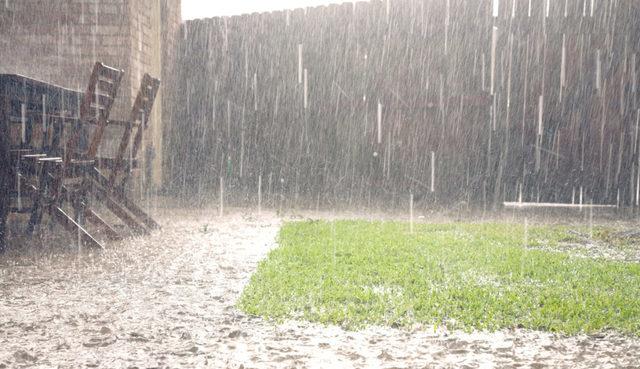Surviving Your First Flooded Basement

Nobody likes to think about a flooded basement at any time of the year. But, heavy spring rains can wreak havoc on a compromised foundation.
Whether it takes a 100-year flood, or your basement gets damp at the slightest hint of rain in the forecast, it is an unsettling experience and possibly a costly one. The average cost of cleaning up a flooded basement can reach into the thousands, with much of that expense coming from remediating the negative health effects of mold and standing water, damage to appliances and electronics, and replacement of the structural elements of your home like drywall and framing.
Finding water in your basement can come as a real shock. It can't be ignored. So, what are the first steps in dealing with a flooded basement?
First things first - be safe!
If at any time you are unsure of how to safely move forward, stop and call a professional. Look to Angi or Home Advisors to find an expert to help you with your flooded basement.
Next, if your circuit breaker is not located in the basement, you'll want to shut off the power to that area in your home. Electrical appliances or devices could become hazardous if they come into contact with the water. If your breaker box is in your basement, it's time to call a professional.
If you smell gas, get out immediately and call the gas company. Is the water is high enough that it could reach and extinguish the pilot light? If so, you will need to get the gas turned off. When you are ready to turn the gas back on and relight the pilot, call your gas company to come out and do it for you.
Lastly, take a walk around the perimeter of your home, checking exterior walls for cracks or other structural damage before you enter a flooded basement. Heavy rains combined with the weight of saturated soil can put a tremendous amount of pressure on your foundation, potentially causing it to buckle. If you have any concerns, call a professional.

Diagnosing the cause of a flooded basement
Your priority is to find out if the water is still "happening", find the source, and stop the flow. There are three main causes of a flooded basement:
Clogged floor drain - water is entering the basement from an internal or external source, with no place to go. The amount of water may overwhelm a slow drain, but the problem should also be addressed at the source of the water.
Plumbing or appliance - a hose or pipe is compromised or not properly attached. This is going to take some careful investigating with your flashlight and your ears. Likely, you should track the potential source by listening for the source of the dribble or deluge.
Walls, Floor, Foundation, or Windows - water is intruding from the outside and somehow penetrating the barrier of your foundation. This can be harder to diagnose since it can seem like the water is simply everywhere. Finding the source of the water is a process of elimination and likely better left to a professional.
The first two may take some advanced DIY skills, or require the assistance of a licensed plumber. Water intrusion from sources outside of the home, like saturated soil due to rainfall or snow thaw, is, unfortunately, a much more complex issue and likely requires the experience and diagnosis of a professional basement waterproofing specialist.
Thrasher Foundation Repair has been helping customers all over the Midwest for 45 years. We offer a free inspection, take the time to diagnose the specific issue, and design a tailored solution to protect your basement from flooding when it rains. We warranty our work for up to 25 years, and the warranty is transferrable if you ever move.

Tools to begin the clean-up of a flooded basement
This may require a trip to your local hardware or home improvement store to gather some supplies. Think about these three areas:
Personal Protection - gloves, boots, eye protection, and even masks are a good idea. You're going to be spending time in some gross water and you should protect yourself.
Water Collection - submersible pump, wet/dry vac, box fan, mops, buckets, and rags. Your goal is to get the water up and out of the basement as quickly as possible to prevent further damage and before mold sets in.
Mold Mitigation - bleach, trash bags, tarps, tools to remove drywall above the waterline. Mold can begin to grow in just 24 hours, so you want to begin drying out and removing anything wet, as quickly as you can.
Article Categories:



